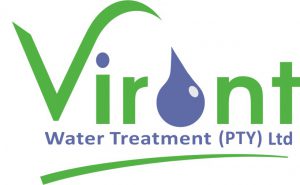Types of Chlorination
Chlorination
Advantages:
- Highly effective against most pathogens
- Provides a residual to protect against recontamination and to reduce slime growth in the distribution system
- Easily applied, controlled, and monitored
- A very strong oxidant
- The most reliable operationally
- The most cost-effective
Disadvantages:
- Byproduct formation (THMs, HAAs)
- Will oxidize bromide to bromine, forming brominated organic byproducts
- Not effective against Cryptosporidium
- Requires transport and storage of chemicals
Elemental Chlorine
Transported and stored as a liquefied gas under pressure, elemental chlorine is the most commonly used form of chlorine.
Advantages:
- Lowest cost of chlorine forms
- Unlimited shelf-life
Disadvantages:
- A hazardous gas that requires special handling and operator training
- Subject to regulatory requirements for occupational safety and health
Sodium Hypochlorite
Sodium Hypochlorite, or bleach, is produced by adding elemental chlorine to sodium hydroxide. Typically, hypochlorite solutions contain from 5 to 15% chlorine.
Advantages:
- Solution is less hazardous and easier to handle than elemental chlorine
- Fewer training requirements and regulations than elemental chlorine
Disadvantages:
- Limited shelf-life
- Potential to add inorganic byproducts (chlorate, chlorite and bromate) to water
- Corrosive to some materials and more difficult to store than most solution chemicals
- Higher chemical costs than elemental chlorine
Calcium hypochlorite
Calcium hypochlorite is another chlorinating chemical used primarily in smaller applications. Containing approximately 65% chlorine, it is commercially available in granular and tablet forms.
Advantages:
- More stable than sodium hypochlorite, allowing longer storage
- Fewer training requirements and regulations than elemental chlorine
Disadvantages:
- Dry chemical requires more handling than sodium hypochlorite
- Precipitated solids formed in solution complicate chemical feeding
- Higher chemical costs than elemental chlorine
- Fire or explosive hazard if handled improperly
- Potential to add inorganic byproducts (chlorate, chlorite and bromate) to water
Onsite Hypochlorite Generation
Some municipalities have installed on-site hypochlorite generators that produce weak hypochlorite solutions (~0.8%) using an electrolytic cell and a solution of salt water, much like is used in domestic and public swimming pools.
Advantages:
- Minimal chemical storage and transport
Disadvantages:
- More complex and requires a higher level of maintenance and technical expertise
- High capital cost
- Operating costs are often higher than for commercial hypochlorite
- Requires careful control of salt quality
- Weak solution requires high volume chemical feed and control
- Byproducts in generated hypochlorite may be difficult to monitor and control
- System backup may be more difficult and costly
